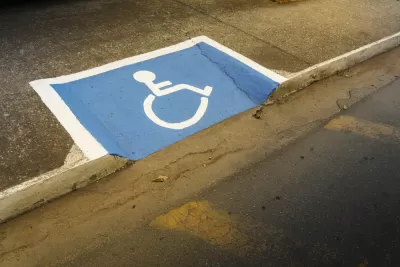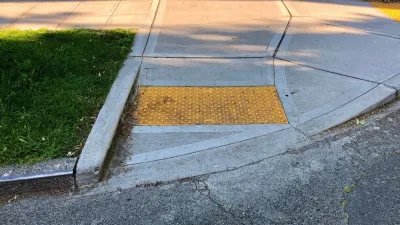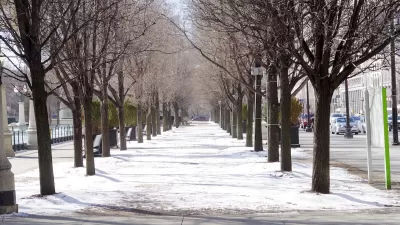Despite the passage of the Americans with Disabilities Act more than 30 years ago, most U.S. cities delay making accessibility improvements to sidewalks until activists bring them to court.

Streetsblog’s Kea Wilson examines why sidewalk accessibility in U.S. cities so often depends on lawsuits filed by mobility advocates despite the existence of the Americans with Disabilities Act (ADA), which ostensibly mandates compliance with accessibility requirements.
As Wilson explains, “Cities like Baltimore, Long Beach, Calif. and Portland, Ore. have all been sued for dangerous sidewalk conditions, but even the suits that advocates win can take decades to translate into real roadway results.”
Of course, funding accessible, complete, and well-maintained networks of sidewalks as the basic civil right they should have always been — and doing it before the lawyers get involved — would make a far greater difference for people with mobility challenges than any lawsuits.
But according to attorney Meredith Weaver, “there are structural reasons why city sidewalk policy can seem so callous — and they help explain why it often takes a multi-year lawsuit to get them to act.” One reason is money, Weaver points out. “I think, given an endless supply of cash, most of them would probably be doing this work already. But without resources, things can fall by the wayside.” Cities end up holding out as long as possible before repairing sidewalks, which would benefit not only people with disabilities but also elderly people, parents with strollers, and anyone with temporary or permanent mobility challenges.
FULL STORY: Why Do People With Disabilities Have to Sue To Get Accessible Sidewalks?

Alabama: Trump Terminates Settlements for Black Communities Harmed By Raw Sewage
Trump deemed the landmark civil rights agreement “illegal DEI and environmental justice policy.”

Planetizen Federal Action Tracker
A weekly monitor of how Trump’s orders and actions are impacting planners and planning in America.

The 120 Year Old Tiny Home Villages That Sheltered San Francisco’s Earthquake Refugees
More than a century ago, San Francisco mobilized to house thousands of residents displaced by the 1906 earthquake. Could their strategy offer a model for the present?

In Both Crashes and Crime, Public Transportation is Far Safer than Driving
Contrary to popular assumptions, public transportation has far lower crash and crime rates than automobile travel. For safer communities, improve and encourage transit travel.

Report: Zoning Reforms Should Complement Nashville’s Ambitious Transit Plan
Without reform, restrictive zoning codes will limit the impact of the city’s planned transit expansion and could exclude some of the residents who depend on transit the most.

Judge Orders Release of Frozen IRA, IIJA Funding
The decision is a victory for environmental groups who charged that freezing funds for critical infrastructure and disaster response programs caused “real and irreparable harm” to communities.
Urban Design for Planners 1: Software Tools
This six-course series explores essential urban design concepts using open source software and equips planners with the tools they need to participate fully in the urban design process.
Planning for Universal Design
Learn the tools for implementing Universal Design in planning regulations.
Clanton & Associates, Inc.
Jessamine County Fiscal Court
Institute for Housing and Urban Development Studies (IHS)
City of Grandview
Harvard GSD Executive Education
Toledo-Lucas County Plan Commissions
Salt Lake City
NYU Wagner Graduate School of Public Service





























